Hori Force Feedback Racing Wheel DLX review: a tour de force?
The Hori DLX is a solid force feedback racing wheel, but its competition is tough
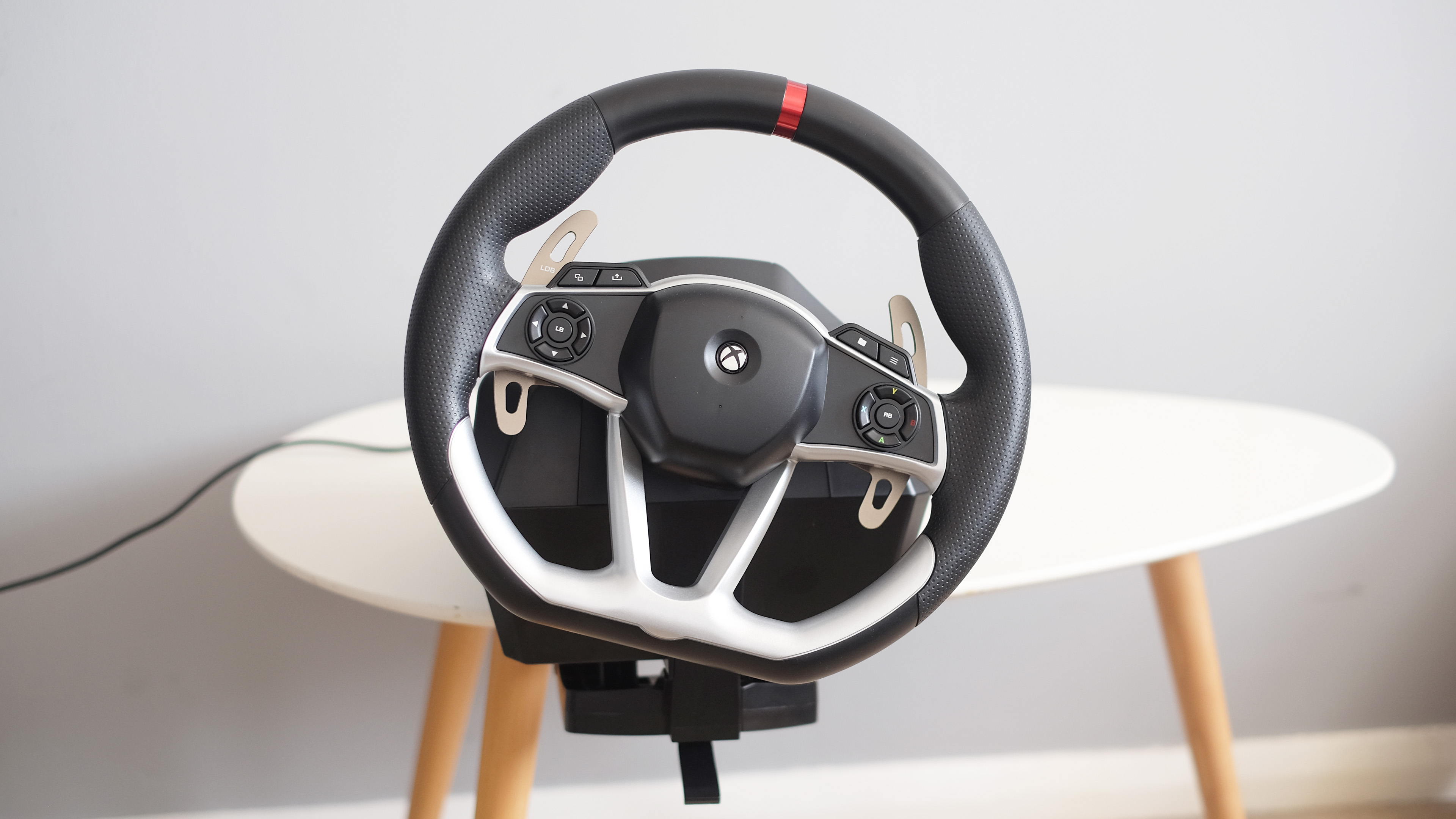
While a solid force feedback racing wheel, the Hori DLX trails Thrustmaster and Logitech thanks to its limited compatibility and so-so build quality.
-
+
Immersive feedback and rumble
-
+
Doesn’t require a high-end setup to fit in
-
+
Solid road surface rumble effects
-
-
No PC support, Xbox only
-
-
Low tension, cheap pedals
-
-
Questionable software support
-
-
Force feedback could be a bit more powerful
Why you can trust T3

The Hori DLX is a force feedback racing wheel made to go head-to-head with sets like the Thrustmaster T248 and Logitech G923. To save the suspense, I think most of you should still get a Thrustmaster or Logitech instead.
While the Hori Force Feedback Racing Wheel DLX offers a decent experience and a massive upgrade over the older Hori RWA, it can’t match the big guns in terms of support. And those key rivals also outpace the DLX’s build quality in important, and quite different, areas.
Find it going for cheap online? It makes a good first force feedback wheel for Xbox gamers. Force feedback transmits the feel of the road to your hands effectively, and the rumble feature burbles along persuasively as your tyres switch from asphalt to muddy scrub. But if you already own a classic Logitech G920 and wonder if this will be a big upgrade the answer is: no, not really.
Hori DLX review: Price and Compatibility
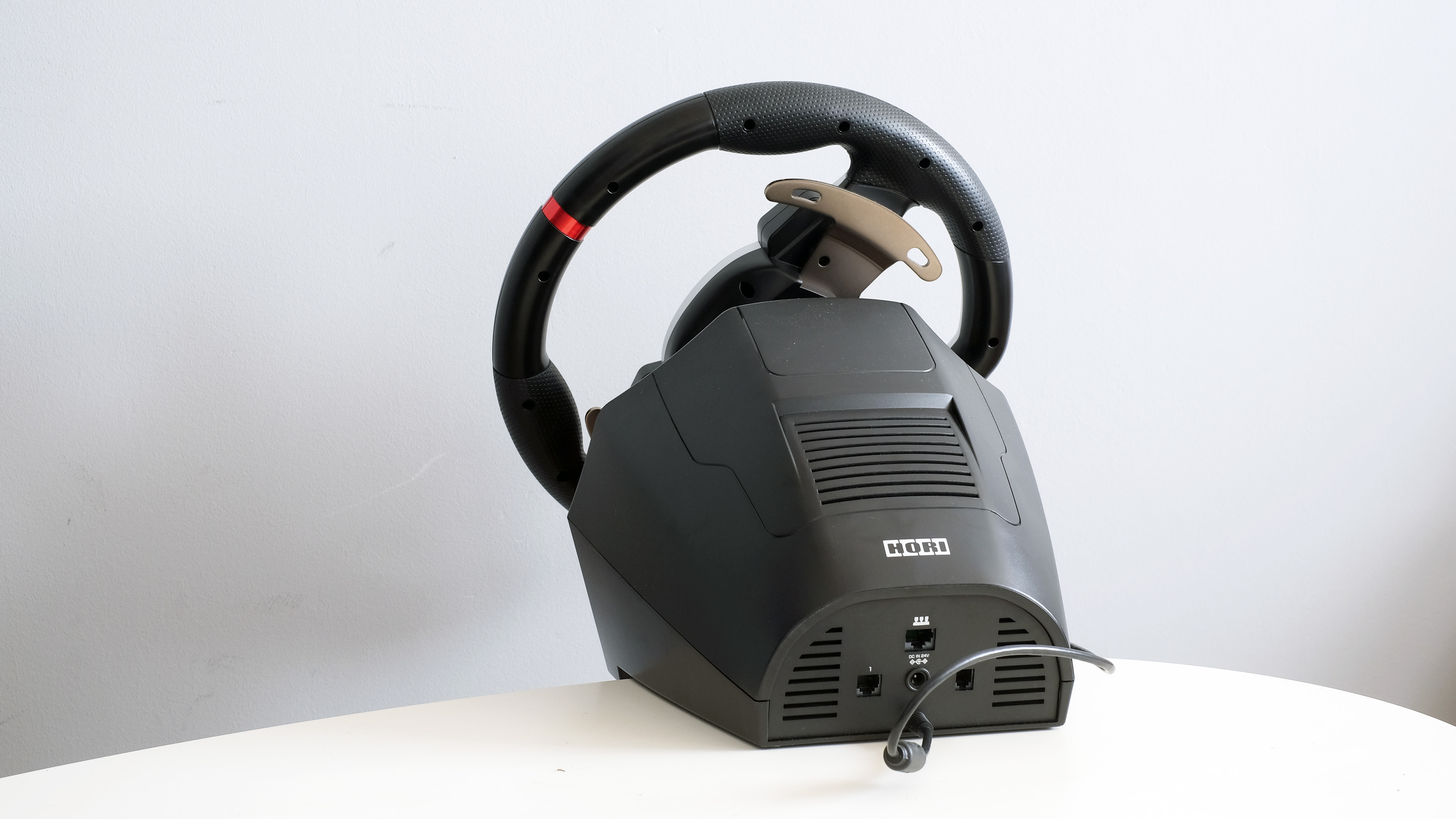
The Hori Force Feedback Racing Wheel DLX’s original price was £299, but you can often find it selling for a little less — occasionally a lot less — online.
This means it is pegged right alongside the Logitech G923 and Thrustmaster T248.
Let’s start with the first way the Hori slips into third position. The wheel only supports Xbox consoles. I tested it primarily with an Xbox Series X. While Hori told me the wheel would support Windows when it first arrived months ago, that just hasn’t panned out.
Windows recognises basic inputs like the Xbox button, but games seem to deny its existence. I even had trouble getting the Hori Xbox app to recognise the wheel, suggesting on-going software support for the Hori Force Feedback Racing Wheel DLX is poor at best. Bummer.
Get all the latest news, reviews, deals and buying guides on gorgeous tech, home and active products from the T3 experts
Hori DLX review: Design and features
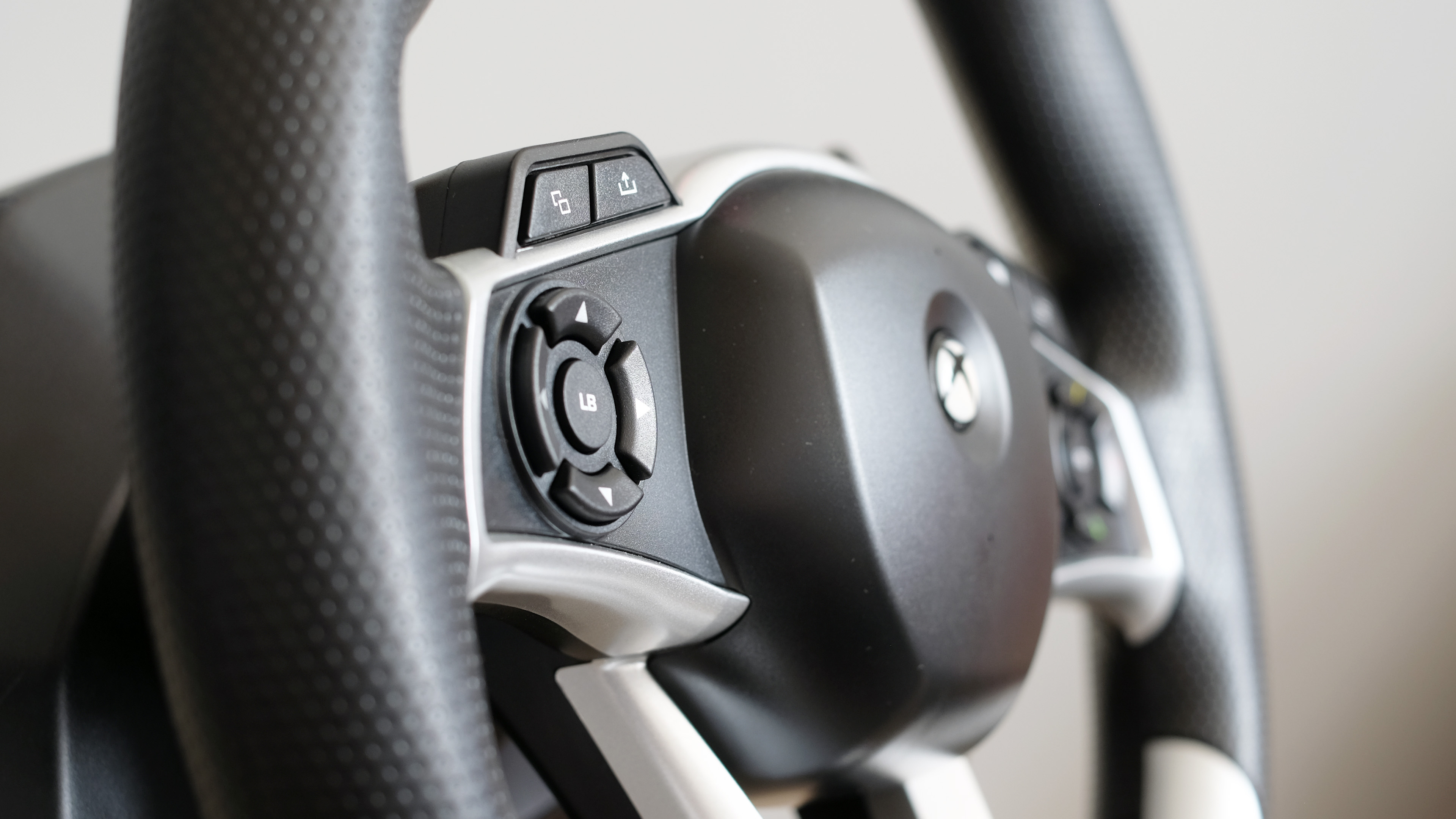
The Hori Force Feedback Racing Wheel DLX’s design is similar to that of classic Thrustmaster designs like the T150 and TX. Buttons from the Xbox pad are splashed across its front, and much of the wheel base is plastic.
On the positive side, this makes the Hori DLX easy to mount, easy to pack into its box away from the eyes of housemates and partners who don’t support your sim racing hobby. But this thing does not feel as substantial as a Logitech G923.
That wheel has a lovely leather rim, and an aluminium core plate you can imagine an old Top Gear presenter describing as a “nice piece of kit”. The Hori Force Feedback Racing Wheel DLX’s core is plastic, so is the rim itself. We do thankfully get a good rubbery coating around the grip area, which is what gives this wheel more of a Thrustmaster flavour.
Setting the Hori Force Feedback Racing Wheel DLX up is a cinch. It comes with a classic screw-in table mount. I used a dedicated racing wheel stand to keep things secure, but a solid desk will do the job perfectly well too.
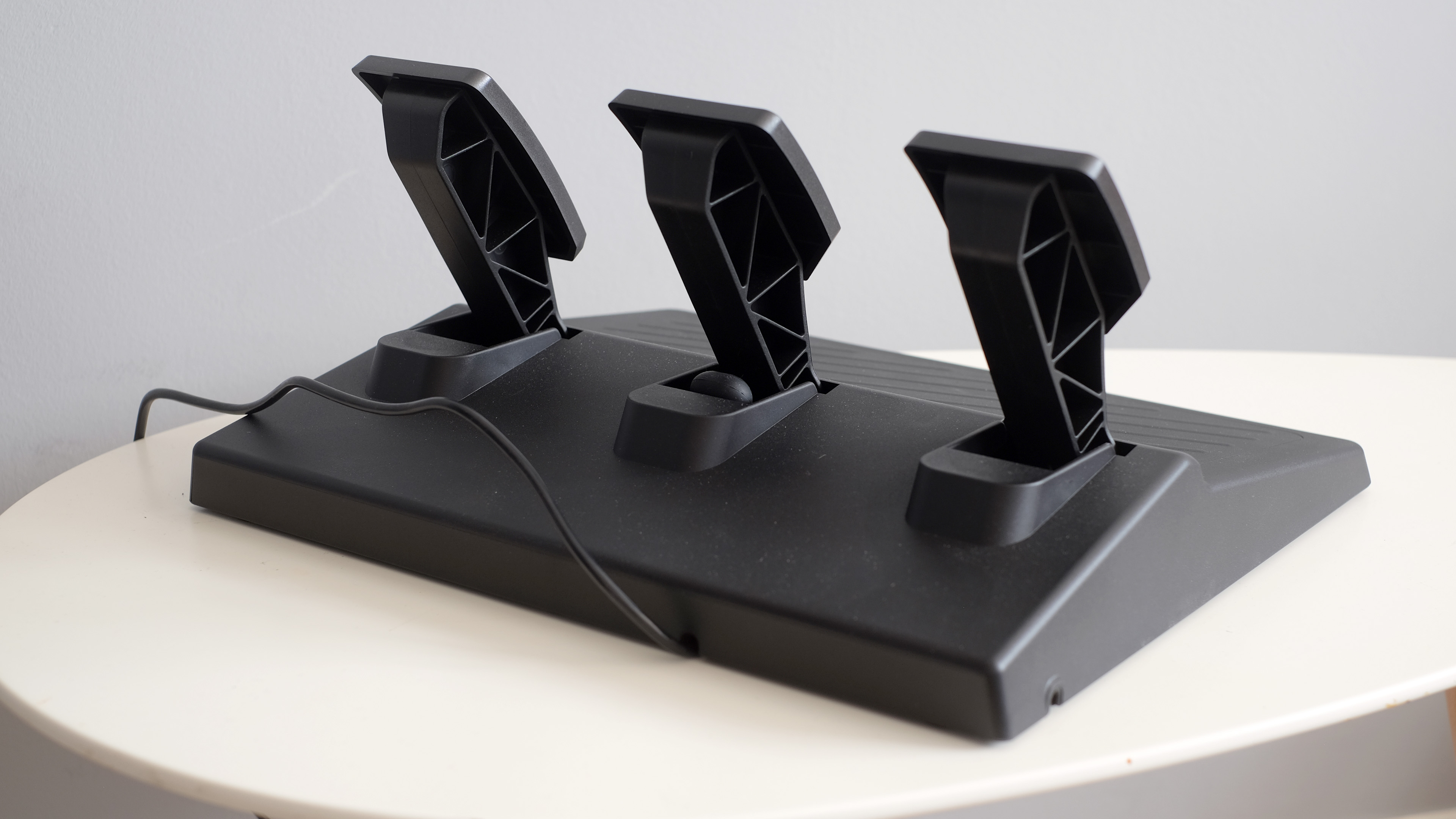
The same quality versus practicality trade-off applies to the pedals too. Hori includes a 3-pedal board: brake, accelerator, clutch.
Once again it’s an all-plastic affair. The feel of the pedals is much lighter than that of the Thrustmaster T248, which currently sets the standard for pedal quality in entry-level racing wheels.
These feel like arcade-style pedals. While there’s a difference in resistance between the three, and a rubber stopper provides a squishy, resistant feel as the brake bottoms out, there’s just not enough oomph to these pedals to give them a truly realistic feel.
This is not great, but it does mean the Hori Force Feedback Racing Wheel DLX’s pedal board is much less likely to gradually slip away from your feet as you play. It’s a casual-friendly wheel through and through — something that would make a bit more sense if its price weren’t so similar to that of the most popular wheels around.
Hori DLX review: Force Feedback and features

This DLX is the first Hori force feedback racing wheel I’ve used and, to the best of my knowledge, the first Hori has made. The Overdrive and RWA were simple arcade wheels that basically use an elastic band to re-centre the wheel — an effect that is not even comparable to FF.
Force feedback uses motors to simulate the resistance you’d feel in a real car. It lets you tell when the tyres lose traction, and makes the wheel harder to turn when the road surface is working against you.
It’s a lot of fun, and while sim racer fanatics may like these wheels as a way to improve lap times, it is just as valid to buy one just for the sheer immersion factor. It’s what I like them for.
But is this particular take on force feedback good? Hori hasn’t said much about how its feedback system works, beyond that it uses two motors. However, turn the wheel and you’ll feel the notchy granularity of an at least partly gear-based system.
However, you also get the benefit of gears, that the force feedback comes fast, feels immediate. If this all sounds like insider-speak nonsense, here are the basics: force feedback systems are driven either by gears or a belt (or a mix) or use a direct drive system where the column is basically jammed right into the motor itself — requiring a much higher fidelity motor system.

I’d rank the Hori DLX as a little below the Thrustmaster T248 in terms of force feedback power. This thing can’t yank the wheel out of your hands the way a Fanatec wheel can. Most won’t want to lower feedback power just so their arms don’t ache after 20 minutes. The classic immersion factor is absolutely here, but I was left longing for just slightly greater feedback strength.
The rumble effects are quite strong, though, instantly telegraphing a change of road surface — at least when the developer has programmed such effects in. This may be the result of the “dual motor” force feedback, also seen in the Logitech G923.
You have relatively little control of the Hori DLX from the wheel itself. A button on the front switches between profiles as setup in the Hori Xbox app. It lets you change things like the steering deadzone. As I mentioned earlier, I’ve had problems getting the app to work properly in this last stint with the DLX, but if you don’t want to create separate profiles for different games, it’s more-or-less plug and play.
Verdict
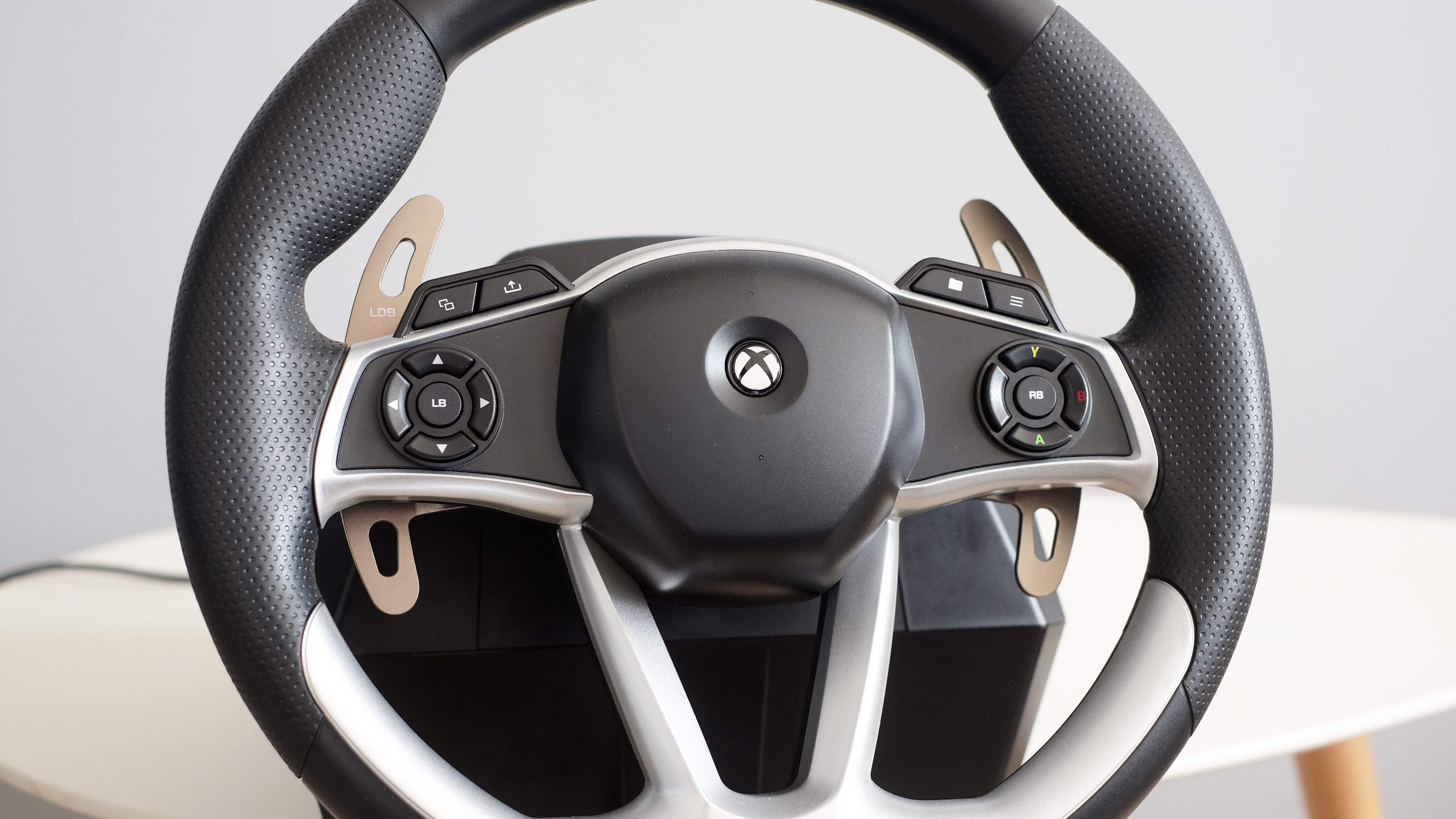
The Hori Force Feedback Racing Wheel DLX is a solid force feedback racing wheel. It’s good to see one of the masters of console accessories make something a bit more serious than the arcade-style wheels it has made over the last decade.
However, it doesn’t enter the market with too much of a splash. The wheel isn’t as well-made as Logitech’s competitor, the pedals aren’t as good as those Thrustmaster now bundles in at the price, and the Xbox-only support is a big issue when all the key rivals support PC and either Xbox or PlayStation consoles.
Also Consider
I’ve mentioned the key rivals a bunch of times already. They are the Thrustmaster T248, Logitech G923 and the slightly older G920.
Pick a Logitech for all-round build quality, or the Thrustmaster if you are more concerned about pedals. My personal Xbox-compatible favourite that is available around this price, though, is the old Thrustmaster TX, which has belt-driven force feedback that results in much smoother-feeling wheel rotation.

Andrew is a freelance tech and entertainment journalist. He writes for T3, Wired, Forbes, The Guardian, The Standard, TrustedReviews and Shortlist, among others.
Laptop and computing content is his specialism at T3, but he also regularly covers fitness tech, audio and mobile devices.
He began writing about tech full time in 2008, back when the Nintendo Wii was riding high and smartphones were still new.